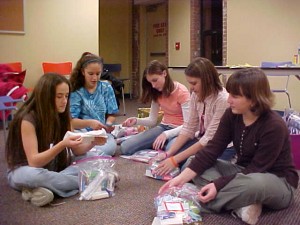Helping the Pet Victims of Alabama’s Tornadoes
Friday, May 6th, 2011 Thousands of volunteers are helping the people who were unfortunate victims of last week’s devastating Alabama tornadoes. And plenty of volunteers are also stepping up to help the estimated 7,000 dogs, cats and horses injured or displaced from their homes by the storm.
Thousands of volunteers are helping the people who were unfortunate victims of last week’s devastating Alabama tornadoes. And plenty of volunteers are also stepping up to help the estimated 7,000 dogs, cats and horses injured or displaced from their homes by the storm.
Like humans, animals have suffered much throughout the South, and especially in Alabama. Exacerbating the problem is the great number of veterinary practices that have been destroyed, along with tens of thousands of homes and other businesses. Animals have been separated from their people, who may be in emergency shelters—or worse, may not have survived the incredibly destructive tornadoes.
For survivors separated from their pets, the worry can add tremendous insult to injury. Anyone who loves an animal can imagine how awful it would be to survive a storm or other disaster, only to discover a beloved pet is missing.
Luckily, dedicated volunteers who understand the human/pet connection are stepping in to reunite pets with their people, as well as to make sure that any injured pets needing care are getting it. Veterinarians are volunteering to care for animals, no matter whom they belong to, or who will or will not pay for their treatment.
Relieving human suffering is most important after a disaster like this. But helping the animals that belong to those humans is important, too. For people who have just been through incredible trauma, it’s extremely difficult to not know whether their pets are okay or even alive. Helping these pets helps their people. Besides, preventing hundreds of cats and dogs from roaming the streets, looking for their owners and becoming more frantic each day is a worthy effort in itself.
PetSmart’s Emergency Relief Waggin’ program sends pre-loaded semi-trailers to help pet victims of natural and manmade disasters. Filled with $60,000 worth of crates, bowls, leashes, food, cat litter and more, the trucks are quickly deployed to help in areas where they are needed.
For information on how to help, visit www.PetSmartcharities.org/emergency-relief.



